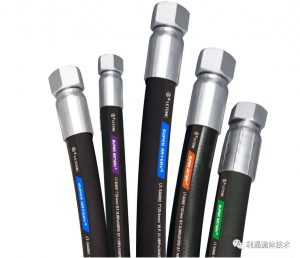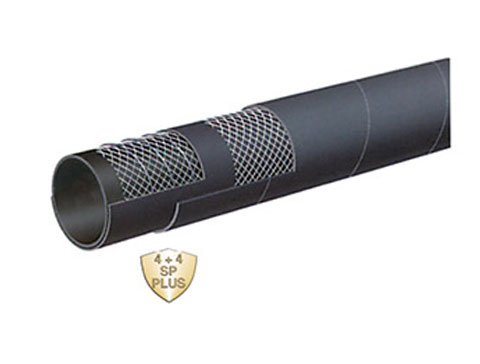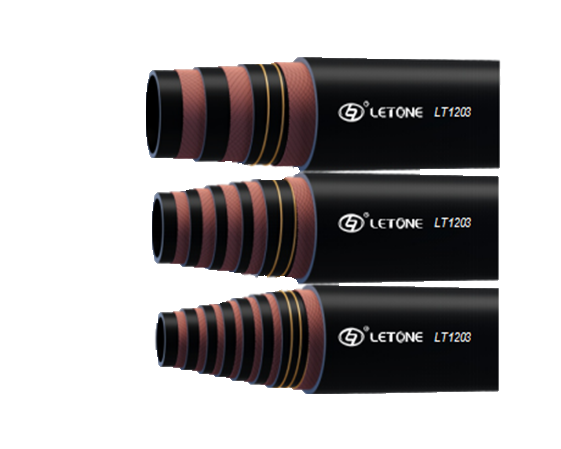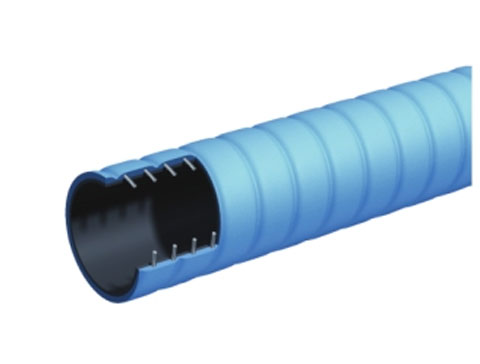In modern industry and various types of mechanical equipment, air hoses and cloth-clamped air hoses are two common transmission equipment. Although they sound similar, there are actually significant differences in construction, purpose, and performance. Understanding the difference between the two is key to choosing the right product, which is critical to improving production efficiency and equipment reliability. This article will delve into the differences between air hoses and cloth-covered air hoses to help consumers make a wise choice.
What is an air hose?
Air hose, as the name suggests, is a hose specially used to transport air. They are usually made of natural rubber, synthetic rubber or thermoplastic materials. Here are some of the key features of air hoses:
1. Material composition: mainly natural rubber or synthetic rubber, such as EPDM rubber, chloroprene rubber, etc. These materials give the hose flexibility and abrasion resistance, allowing it to be used in a variety of environments.
2. Application fields: widely used in pneumatic tools, air compressors, automobile manufacturing, construction machinery and other fields. Suitable for scenarios where air or other inert gases need to be transported.
3. Flexibility: Due to the use of high-quality rubber material, this type of hose has high flexibility and can be easily bent and rolled, making it suitable for various complex working environments.
4. Temperature adaptability: Able to maintain good performance in a wide temperature range, suitable for different working environments.

What is a cloth-clamped air hose?
The cloth-filled air hose is based on the ordinary air hose by adding a cloth layer inside to enhance its performance. This kind of hose usually has one or more layers of high-strength fiber fabric sandwiched inside. This design makes the cloth-covered air hose superior to ordinary air hoses in terms of pressure resistance and wear resistance. The following are the main features of cloth-covered air hoses:
1. Structural design: Different from ordinary air hoses, cloth-covered air hoses have one or more layers of high-strength fiber fabric. These fabric layers serve as reinforcements between the inner and outer rubber layers of the hose.
2. Pressure resistance: Thanks to the existence of the cloth layer, the cloth-filled air hose can withstand higher pressure and is more suitable for use in high-pressure environments.
3. Wear resistance: The fabric layer not only improves the pressure resistance of the hose, but also enhances its wear resistance, allowing it to be used for a long time under more severe working conditions.
4. Scope of application: Suitable for industries requiring high-pressure air transmission, such as heavy machinery, tunnel construction, mining, etc. At the same time, it can also be used in some air transmission systems that require high strength and durability.
Detailed differences between air hose and cloth-covered air hose
Although both are used for air transfer, air hoses and cloth-clamped air hoses differ significantly in a number of key characteristics.
1. Differences in structure
Air hoses are usually composed of a single or multiple layers of rubber material, while fabric air hoses have one or more layers of high-strength fiber fabric sandwiched between the rubber layers. In this way, the cloth-covered air hose is more complex and stronger in structure.
2. Differences in performance
1. Pressure endurance: Air hoses have weak pressure resistance and are generally suitable for low-pressure scenarios. The cloth-clad air hose can withstand higher working pressure due to the reinforcement of the cloth layer.
2. Wear resistance: With the support of high-strength fiber fabric, the wear resistance of cloth-covered air hose is significantly improved, making it more suitable for long-term, high-intensity working environments.
3. Flexibility: Ordinary air hoses are softer and more flexible than cloth-covered air hoses, and are suitable for scenes that require frequent movement and operation.
3. Differences in application scenarios
Air hoses are usually used in scenarios that require lower pressure and high flexibility, such as car repairs, household pneumatic tools, etc. Cloth-covered air hoses are often used in industrial scenarios that require high strength, high pressure and high wear resistance, such as mining, petrochemical industry, heavy machinery, etc.
Choosing the Right Hose: Factors to Consider
When choosing an air hose or cloth-clamped air hose, there are several key factors to consider:
1. Working pressure: Select the appropriate pressure level according to the specific working environment. Ordinary air hoses are suitable for low-pressure scenarios, but for high-pressure requirements, cloth-covered air hoses are a better choice.
2. Working environment: If the working environment is harsh, the temperature changes greatly, or there is strong wear and tear, cloth-covered air hose is obviously a more suitable choice.
3. Flexibility requirements: The flexibility of the hose needs to be considered to ensure convenience and flexibility during operation. Air hoses perform better at this point.
Air hoses and cloth-covered air hoses of different materials
In addition, air hoses and cloth-covered air hoses can also be made of different rubber materials, and different materials have different characteristics:
1. Natural rubber: It has good elasticity and wear resistance, but poor oil resistance and aging resistance.
2. EPDM rubber: excellent weather resistance and aging resistance, suitable for outdoor and high temperature environments.
3. Neoprene: Good oil resistance and anti-aging properties, suitable for scenes that require oil resistance and anti-corrosion.
Common models and parameters of air hoses and cloth-clamped air hoses
There are many types of common air hoses and cloth-covered air hoses, and each model has different performance parameters, such as inner diameter, outer diameter, working pressure, bursting pressure, bending radius, etc. When selecting, detailed comparison and selection must be made based on specific application requirements.
1. Inner diameter and outer diameter: Generally, the appropriate inner diameter and outer diameter are selected according to the flow rate of the conveyed medium and the installation space.
2. Working pressure and bursting pressure: Select the appropriate hose according to the pressure requirements in the specific working environment to ensure safety and durability.
3. Bending radius: In scenarios that require frequent movement or operation, choosing a hose with a smaller bending radius can improve the flexibility and convenience of operation.
Care and maintenance
Whether it is an air hose or a cloth-covered air hose, care and maintenance are very important. Correct maintenance can effectively extend the service life of the hose and ensure work safety.
1. Regular inspection: Regularly check the surface of the hose, especially the bends and connection parts, to see if there is any wear, rupture, etc.
2. Avoid excessive bending: During use, try to avoid excessive bending and twisting of the hose to prevent damage caused by stress concentration.
3. Correct storage: Unused hoses should be stored in a dry, cool place away from direct sunlight and chemical corrosion.
In general, there are significant differences in construction, performance, and application between air hoses and cloth-covered air hoses. Understanding these differences and choosing the right product based on your actual needs can significantly improve the efficiency and safety of your job. Whether it is a flexible air hose that meets low-pressure requirements or a cloth-covered air hose that requires high pressure and wear resistance, the right choice will bring long-term reliability and efficiency to your work.









